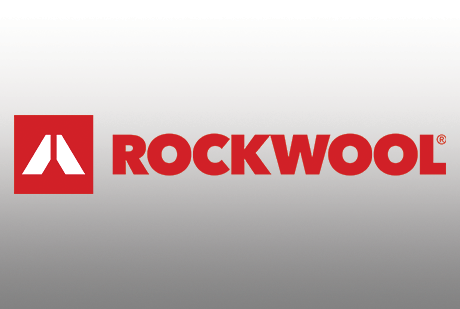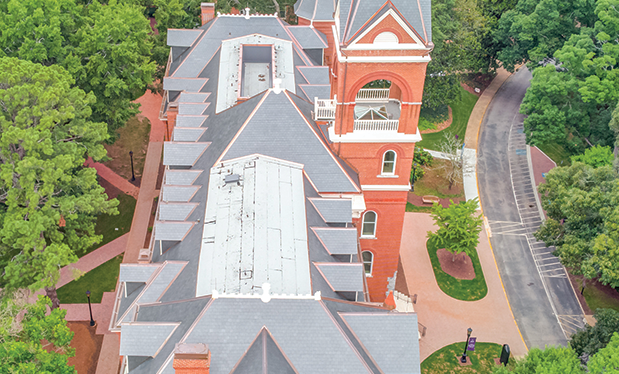ROCKWOOL announces reduced lead times for roofing products

|
ROCKWOOL, Milton, Ontario, the world’s leading manufacturer of stone wool products, has announced significant reductions in lead times for its roofing products.
The operations of ROCKWOOL’s newest North American facility in West Virginia have helped reduce lead times. The facility opened in 2021, and as production capabilities have ramped up, the increased capacity is making it easier and faster for the company to supply customers and distributors in the U.S. during a time when supply chain issues are affecting the roofing industry.

|
Workers are spending more on health care costs
A study released in January by the Commonwealth Fund, a New York-based health care research organization, shows workers in most states paid nearly 12% of median income for health insurance premiums and out-of-pocket expenses in 2020 compared with 9% in 2010, according to Bloomberg Law.
The report, “State Trends in Employer Premiums and Deductibles, 2010-2020,” found those health care costs take up 10% or more of median income in 37 states compared with 10 states a decade ago.
The report also found employer health coverage has been relatively stable during the COVID-19 pandemic, with only 6% of working-age adults losing employer health coverage and few becoming uninsured.
According to the study, rising health insurance costs and deductibles are fueled by high health care and drug prices.
Middle-income workers in Mississippi and New Mexico faced the highest potential costs relative to income at 19% and 18%, respectively. On average across all states, employees’ premium costs in 2020 amounted to 6.9% of income compared with 5.8% in 2010, and the average deductible for a middle-income household was 4.7% of income compared with 3.3% in 2010.
The average total cost of premiums and potential spending on deductibles rose to $8,070, with costs ranging from a low of $6,528 in Hawaii to a high of more than $9,000 in Florida, Kansas, Missouri, South Dakota and Texas for 2020.
In nearly half the states, middle-income households faced average deductibles equivalent to 5% or more of income compared with only one state in 2010.
Private construction industry fatalities fell, fatal injury rate rose in 2020

|
On Dec. 16, 2021, the Bureau of Labor Statistics released its annual National Census of Fatal Occupational Injuries report for 2020, which showed the private construction industry had 1,008 fatal injuries for the year—down 5% from 1,061 fatal injuries in 2019, according to enr.com. The number of fatal injuries in 2020 is the same as the 2018 figure and higher than the number of construction fatalities in any year from 2011 to 2017.
Additionally, the industry’s 2020 fatal injury rate rose to 10.2 per 100,000 full-time equivalent workers from 9.7 in 2019 and is the highest rate for at least the past 10 years.
The fatal injury rate is viewed as a key safety indicator because it adjusts for yearly changes in the overall number of workers and amount of construction work.
BLS noted its fatal work place injury report does not include illness-related information, including COVID-19.
“One fatality in the construction industry is one too many,” says Greg Sizemore, Associated Builders and Contractors’ vice president of health, safety environment and workforce development. “While the annual report is disappointing, it reveals the important truth that much more work must be done in our industry to protect our people from hazards, strengthen safety cultures in the workplace and improve the total human health of the entire construction workforce.”
Overall, BLS reported the total number of fatal occupational injuries was down 10.7%, falling from 5,333 in 2019 to 4,764 in 2020. The national work fatality rate declined to 3.4 per 100,000 full-time employees from 3.5 in 2019.
The National Census of Fatal Occupational Injuries report is available at bls.gov.
NRCA outperforms nonprofit average on social media
Recent data from social media management platform Sprout Social show NRCA consistently outperformed other nonprofit organizations, as well as overall industries, on its social media platforms in 2021.
When compared with other nonprofits that use Sprout Social, NRCA’s total impressions in 2021 reached 6.3 million, which is 125% higher than the industry average of 2.8 million. NRCA also delivered more social media content with 4,700 posts in 2021, which is 262% higher than the industry average of 1,300 posts.
NRCA gained 3,300 social media followers in 2021—106% higher than the industry average of 1,600 followers. And NRCA’s followers were engaged; the association had 489,700 engagements on social media in 2021, which is 388% higher than the nonprofit industry average of 100,300.
NRCA also fared well when compared with the average from all industries in Sprout Social’s report, boasting 97% more impressions; 292% more content; 57% more new followers; and 311% more engagement.
Illinois tops USGBC ranking of states for LEED® green building

|
Illinois topped the U.S. Green Building Council’s annual ranking of states for LEED green building in 2021 after falling to No. 5 on the list in 2020, according to forconstructionpros.com.
States were ranked based on the number of LEED-certified square feet per capita in the state. In 2021, Illinois certified 87 LEED projects for a total of 3.16 square feet of LEED-certified building per person. The top 10 states and Washington, D.C., certified 1,105 projects and more than 247 million gross square feet under LEED.
The states following Illinois in the top 10 are Washington, Massachusetts, Colorado, Virginia, California, Maryland, Oregon, Utah and Nevada. USGBC notes Washington, D.C., would have had the highest ranking with 29.46 green square feet per capita and 103 green building projects, but it is not included because it is not a state.



